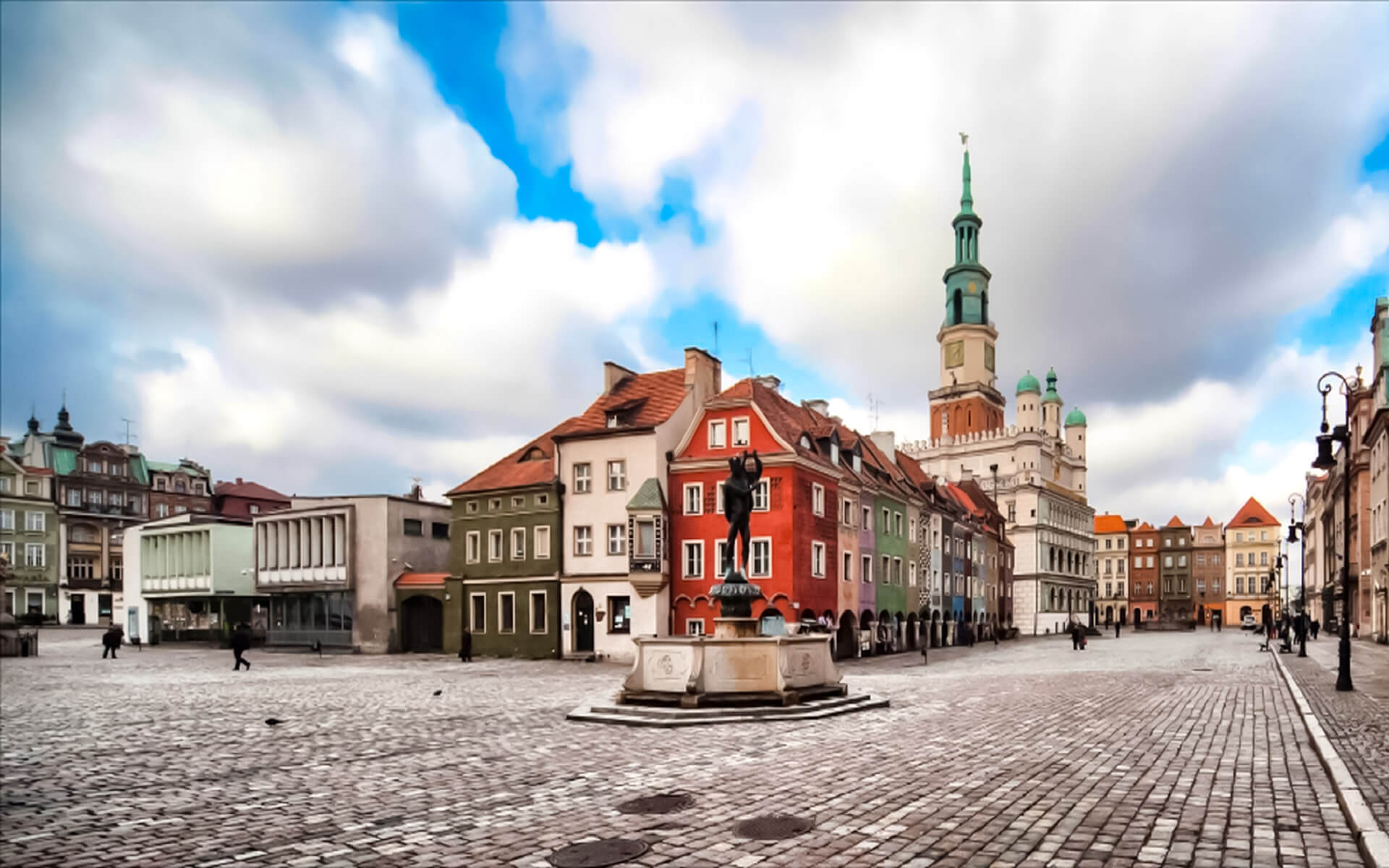Poznan (German: Posen) is the biggest city in Greater Poland, located in western Poland, and one of the country’s main metropolises. It is an important commercial hub and a center for manufacturing and trade, almost midway between Warsaw and Berlin. The Poznan International Trade Fair grounds host the most major trade fairs and exhibits in Poland, making Poznan a popular business destination, but the city also has a rich history and attractions to offer. Its small size and ease of access by road, train, and air make it an appealing tourist destination for tourists to Central Europe.
CULTURE AND SIGHTS
Poznan has several historic buildings and sites, the most of them are situated in the Old Town and other portions of the city center. Many of these may be seen on the Royal-Imperial Route in Poznan, a tourist route that leads through the city’s most prominent areas, highlighting its history, culture, and identity. Portions of the city center, as well as other parts of the city’s historic core, have been recognized as one of Poland’s official national Historic Monuments (Pomnik historii) on November 28, 2008. The National Heritage Board of Poland maintains its listing.
Prof. dr hab. Hanna Kocka-Krec of Instytut Prahistorii UAM’s new substantial archaeological study on Poznan’s Ostrow Tumski indicates that Poznan was certainly a key center of the early Polish State (latest discovery of first Polish ruler,Mieszko I’s Palatium). Thus, Ostrow Tumski Island is more significant than previously assumed, and it may have been as important as “Gniezno” in the Poland of the earliest “Piasts.” Despite the fact that it is still under construction, “Ostrow Tumski of Poznan” should have a very rich historical exposition and be a highly fascinating location for tourists very soon. It promises to include many attractions, including the previously mentioned Cathedral, Church of St. Mary the Virgin, “Lubranski Academy,” and the opened in 2012 “Genius Loci Archeological Park,” as well as the planned Interactive Center of Ostrow Tumski History (“ICHOT”), which will present a multimedia museum of the Polish State through many different periods. The “Palatium in Poznan” will also be converted into a museum, albeit further finances are required. When all of the expositions are completed in a few years, Ostrow Tumski may be as interesting to visit as “Wawel” in Kraków. “Poland originated here,” said Pope John Paul II, highlighting the significance of Ostrow Tumski in Poznan.
Malta, with an artificial lake in the middle, is one of the most attractive attractions in Pozna. On one side of the lake, there are ski and sleigh slopes (Malta Ski), while on the other bank, there is a massive complex of swimming pools, including an Olympic-size pool (Termy Maltanskie). This whole recreational city “district” is unique in Poland, if not Europe.
The annual Malta theatrical festival, which takes place at numerous city locations in late June and early July, is perhaps the most prominent cultural event in Poznan. It primarily presents contemporary experimental off-theatre performances, which often take place in squares and other public locations. It also includes film, video, music, and dance events. Many off-theater organizations were formed as a result of the Malta Theatre Festival, expressing new ideas in the city’s already rich theatrical tradition. Thus, Poznan, with its many off-theaters and performances, has lately emerged as a new Polish off-theater performance hub.
Classical music activities include the Henryk Wieniawski Violin Competition (held every five years) and monthly Philharmonic Orchestra performances at the University Aula. Concerts by the Pozna Nightingales are very popular.
Poznan is also home to modern kinds of music like as rap and hip-hop, which are created by many bands and artists (“Peja”, “Mezo” and others). Poznan is also well-known for its rock musicians (Muchy, Malgorzata Ostrowska).
Apart from many traditional theaters with a long history (“Teatr Nowy”, “Teatr Wielki”, “Teatr Polski”, “Teatr Muzyczny” and several others), Poznan is also home to a growing number of alternative theater groups, some of which stem from the International Malta Festival: “Teatr Strefa Ciszy”, “Teatr Porywcze Cial”, “Teatr Usta Usta”, “Teatr
Every year on November 11th, Poznans commemorate The Day of St. Marcin Street. A procession of horses, led by St. Marcin, marches along St. Marcin Street in front of The Imperial Castle. Everyone can enjoy wonderful croissants, a Poznan regional product.
The 2009 European Young Adults Meeting of the ecumenical Christian Taizé Community was held in Poznan.
In December, Poznan hosts the “Ale Kino!” International Young Audience Film Festival, as well as the “Off Cinema” festival of independent films. Other festivals include “Transatlantyk” (a film and music festival founded in 2011 by Jan A.P. Kaczmarek), Maski Theater Festival, Dance International Workshops by Polish Dance Theater, Made in Chicago (Jazz Festival), Ethno Port, Festival of Ice Sculpture, Animator, Science and Art Festival, Tzadik (Jewish music festival), and Meditations Biennale (Modern Art). The whole calendar of cultural yearly events is significantly lengthier.
Poznan contains a number of cinemas, including multiplexes and smaller theaters, as well as an opera house, various other theaters, and museums.
The “Rozbrat” squat provides a home for squatters as well as a hub of independent and open-minded culture. It features regular concerts, an anarchistic library, vernissages, exhibits, an annual birthday celebration (in October), poetry nights, and graffiti festivals. Many bars, taverns, and coffee shops may be found in the city center, particularly in the Old Town.


